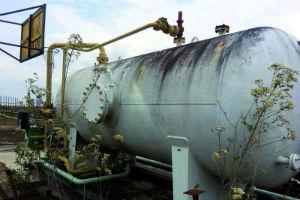 The inspector must keep in mind some important aspects when executing a corrosion assessment plan, which will allow identifying details to establish the condition of the parts.
The inspector must keep in mind some important aspects when executing a corrosion assessment plan, which will allow identifying details to establish the condition of the parts.
by Juan Manuel Álvarez*
On a day-to-day basis, both in the field and in the same reports, we observe that corrosion damages of materials or structures are reported, that subsequent removals of the corrosion found in the materials are carried out and that treatments are complied with to give continuity of service to the affected structures.
But in many cases only corrosion damage is reported, eventually the type of corrosion is specified, although not always exactly, because only the amount of corroded material to be removed is considered and usually the replacement or application of the same products, processes or control techniques originally applied, this without taking into account the origin of the failure.
The origin of the fault is directly related to the type of corrosion; remember that corrosion affectation can pass from one type of corrosion to another. For example, starting the corrosion process with a specific type of corrosion, moving to another type in the same material or component, even in the same affected area, and subsequently developing another type that may eventually bring the material or structure to a state of non-repairability or reliability.
The identification of the type of corrosion is a basic knowledge and of vital importance for the corrosion inspector, this form of identification or the way corrosion manifests itself is what is known as morphology.
It is pertinent, from all points of view, to specify at the time of inspection, and through the reports, the type of corrosion found (its morphology), and to assess it in such a way that the repair or not of the corrosion found can be established.
The criterion of repair or restitution to the design conditions must take into account that both the material and the affected structure comply with the reliability that is required, for the fulfillment of the mechanical work and for the environmental exposure for at least a time, which allows to comply with a cost-benefit analysis.
Therefore, it should be noted that corrosion costs are an important item in terms of maintenance value; for this, there are many products for corrosion control, various processes applicable in materials for corrosion control and several techniques that allow to achieve magnificent results in this aspect in question.
In this way, the reported corrosion does not represent the reality of the damage when it is qualitatively related (by name) without considering the measurement of the affected material, the location of corrosion in the structure, the type of corrosion present and the level and degree of it.
When the aforementioned variables are taken into account, it is possible, with great accuracy, to assess the reliability of the material or structure, and therefore determine the ideal area of corrosion removal present and the ideal treatment to follow; the above also serves to consider the type of product, process or corrosion control technique, suggesting the continuity of the original product, process or control technique or recommending another product, process or technique that allows to give a longer useful life to the affected material or structure.
Valuation process
One could cite a fairly large list of products, various processes and various techniques for corrosion control; but the criteria for the selection and resistance that each of them can provide us is based on the assessment of the material and the environment to which it is exposed.
Thus, in compliance with the corrosion assessment procedure, the determination of repairability and treatment for return to service, it is recommended to establish in your order the following step by step or protocol:
1.Type of corrosion.
2.Material affected by the corrosion process.
3.Location of corrosion.
4.Structure affected by corrosion.
5.Environment in which the structure is located.
6.Working parameters (Humidity, temperature, pH, pressure, mechanical work, vectors).
7.Product, process or corrosion control technique applied to the structure originally.
8.Service time of the affected structure or affected component.
9.Service time of the product, process or corrosion control technique applied to the structure or component.
10.Remaining service life of the structure or component.
Each of these ten steps will be extended in the following editions of the journal, one step or item per article, so it is recommended that the reader, if this topic is of interest, be aware of the receipt of your copy.
This sequence of topics that will be developed aims to expand the knowledge of the corrosion inspector and determine the competencies they apply for the fulfillment of their work that has interference not only in safety through the good condition and reliability of structures, but also with regard to the care of the environment and the preservation of natural resources, aspects that will be deepened at the end of the sequence of topics related to the inspection and assessment of corrosion.
As always I wish you a good aging and many successes in your work.
* Juan Manuel Álvarez is a Consulting Member of the technical committees of NACE International, Member of A.S.T.M, of ACICOR (Colombian Association of Corrosion Engineers), of ASCOR (Colombian Association of Corrosion and Protection), of ACOSEND (Colombian Association of Welding and Non-Destructive Testing), of ICONTEC (Colombian Institute of Technical Standards), of the technical committees of END, Welding, Coatings, Fuels and others. He is also a university professor and lecturer. You can write to the e-mail: [email protected]
























Leave your comment